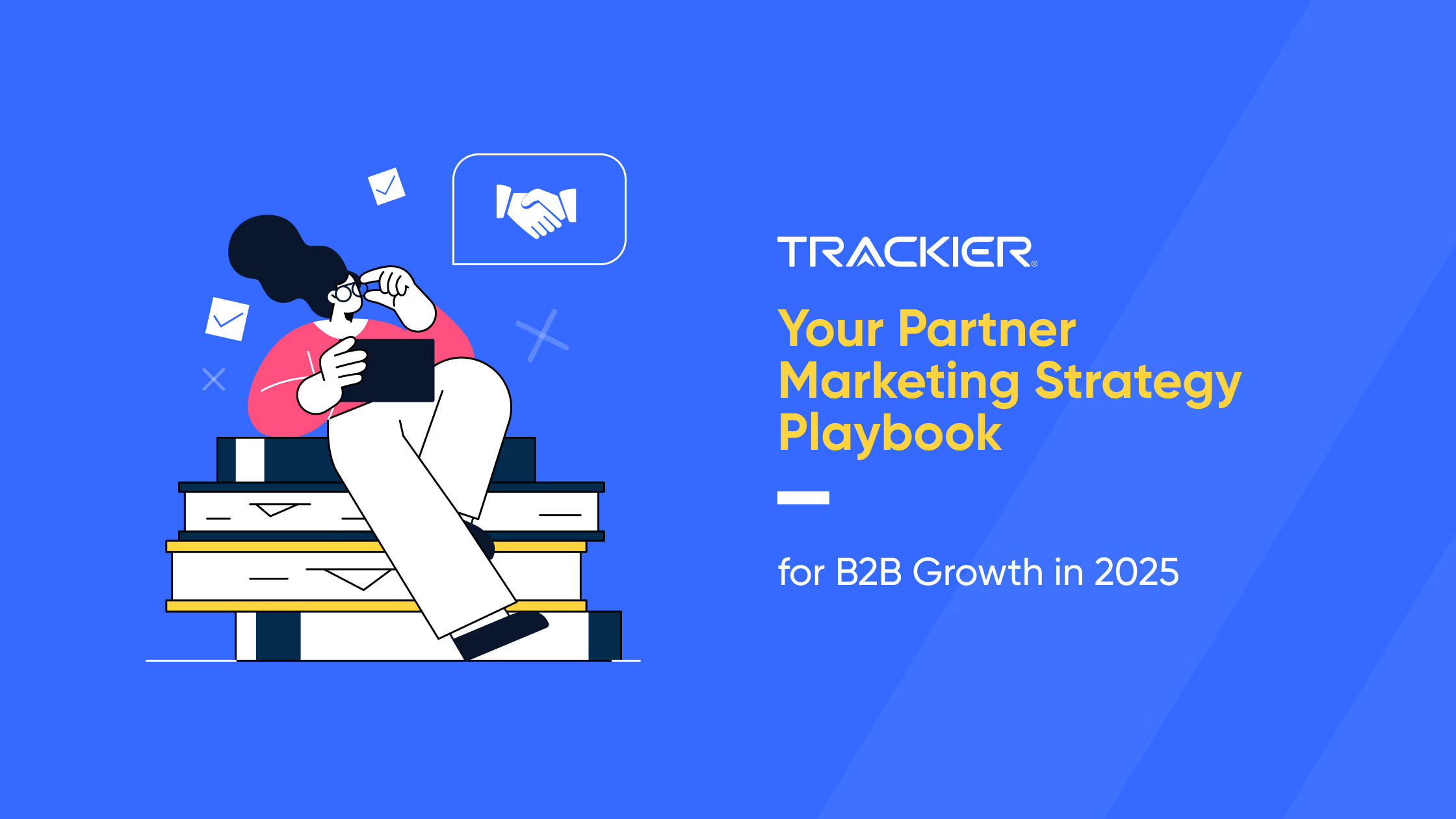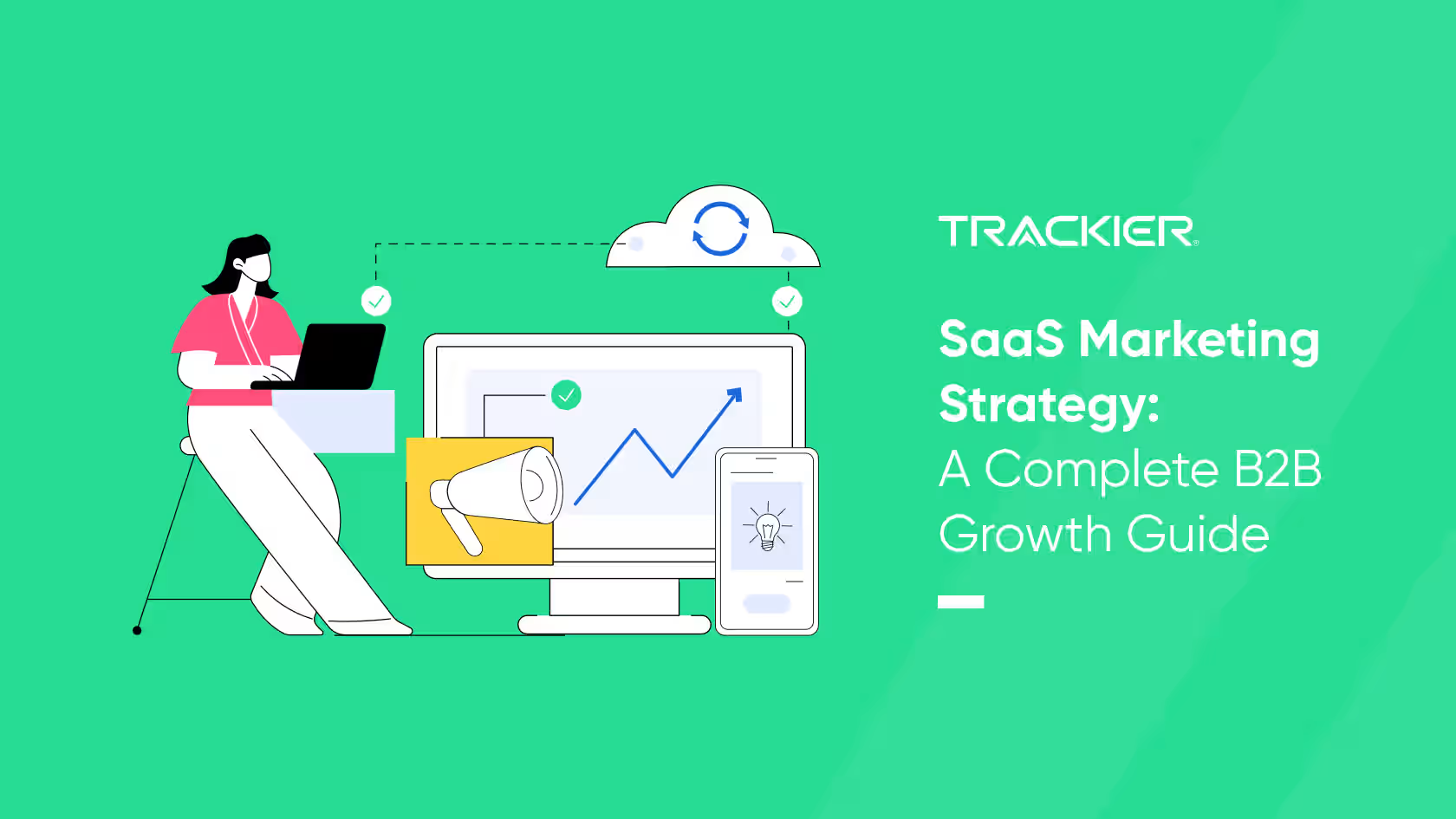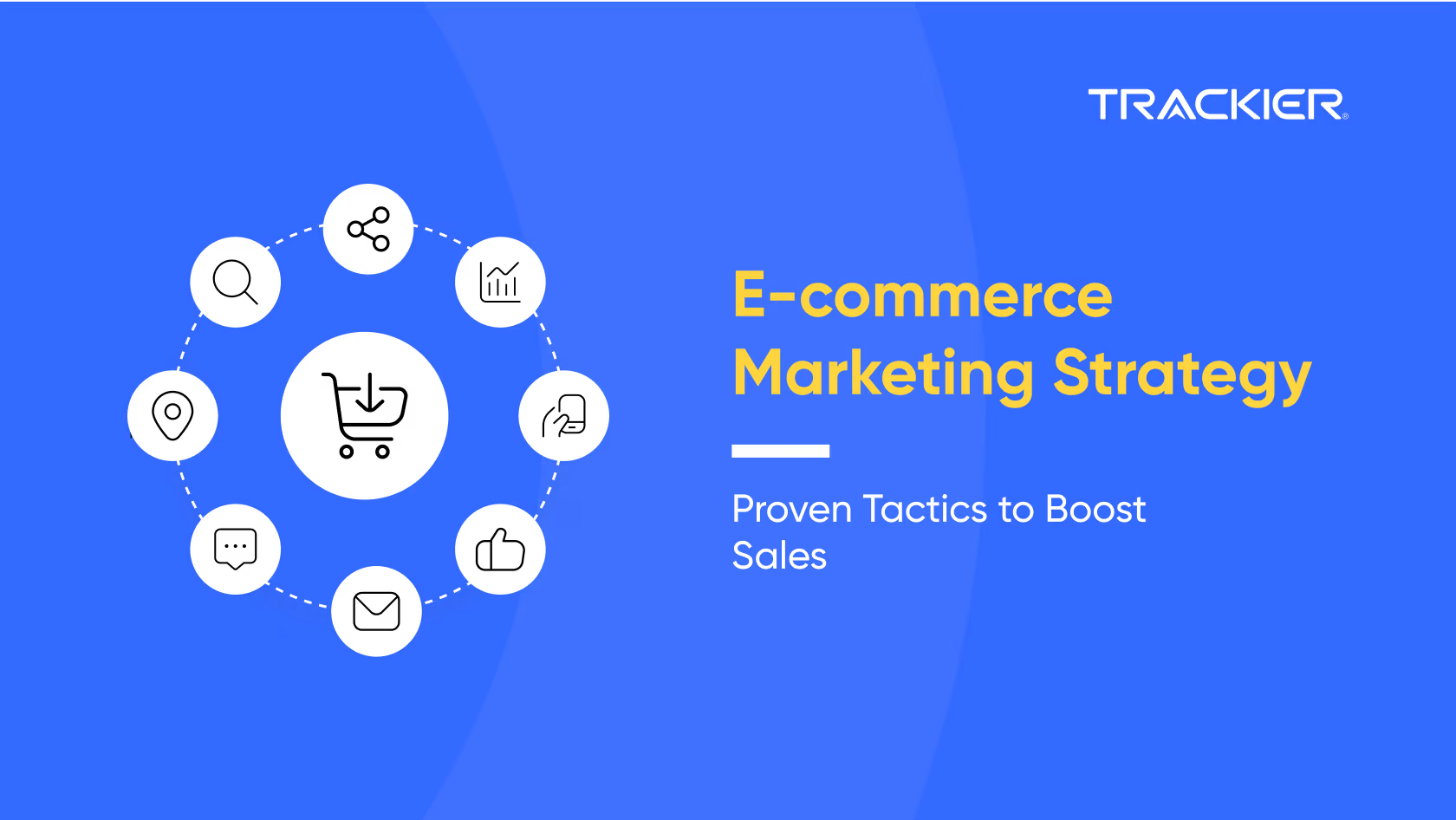If you have spent any time in B2B marketing, you already know partnerships can do two things. They either push your growth to new heights or drain your time and budget with little to show for it. The difference lies in having a partner marketing strategy that actually works.
In 2025, partnerships are no longer an optional side project. They sit at the center of how startups, agencies, and enterprise-level brands scale without blowing up acquisition costs. A strong strategy brings in new customers, yes, but it also builds ecosystems, opens access to new technologies, and creates co-branded campaigns that truly move revenue.
That is what this guide is about. We are diving into 12 proven partner marketing strategy tips that leading B2B brands are using to grow. Whether you are refining your channel partner marketing strategy or exploring partnership marketing for the first time, you will find actionable ideas you can start using right away.
Quick tip – if you are looking for a way to track partner ROI in real time, check out Trackier’s Partner Marketing Platform. It handles everything from affiliate tracking to fraud prevention so you know which partnerships are driving results.
What Is a B2B Partner Marketing Strategy and Why Does It Matter in 2025?
At its core, a B2B partner marketing strategy is a plan where two or more companies work together to promote and sell products or services. They share resources, audiences, and revenue. This collaboration can take many forms: co-hosted webinars, joint lead generation campaigns, or full reseller programs where partners handle sales on your behalf.
The reason it matters now more than ever is simple. Customer acquisition costs are climbing and paid channels are crowded. Partnerships give you a way to reach new audiences with built-in trust and credibility.
Recent research shows that over half of B2B SaaS sales now involve partners and that 85% of companies consider partnerships a primary driver of business growth.
This trend is accelerating because brands that align with strategic partners can expand market reach and improve retention through bundled, more complete solutions.
How Does Partner Marketing Strategy Work for B2B Brands?
With a well created partner marketing strategy, instead of running individual campaigns, you and your partners combine your reach, tools, and expertise to attract customers faster.
For example:
- Channel partners like resellers and distributors can sell your products to their networks.
- Affiliate and referral partners earn commissions for generating leads or closing sales.
- Co-marketing partners help create and fund content, ads, or events that generate demand for both companies.
Each of these models needs its own set of incentives and tracking methods. This is where tools like Trackier’s Affiliate Management Software simplify things. They make attribution and fraud control transparent, so you and your partners know exactly what is working.
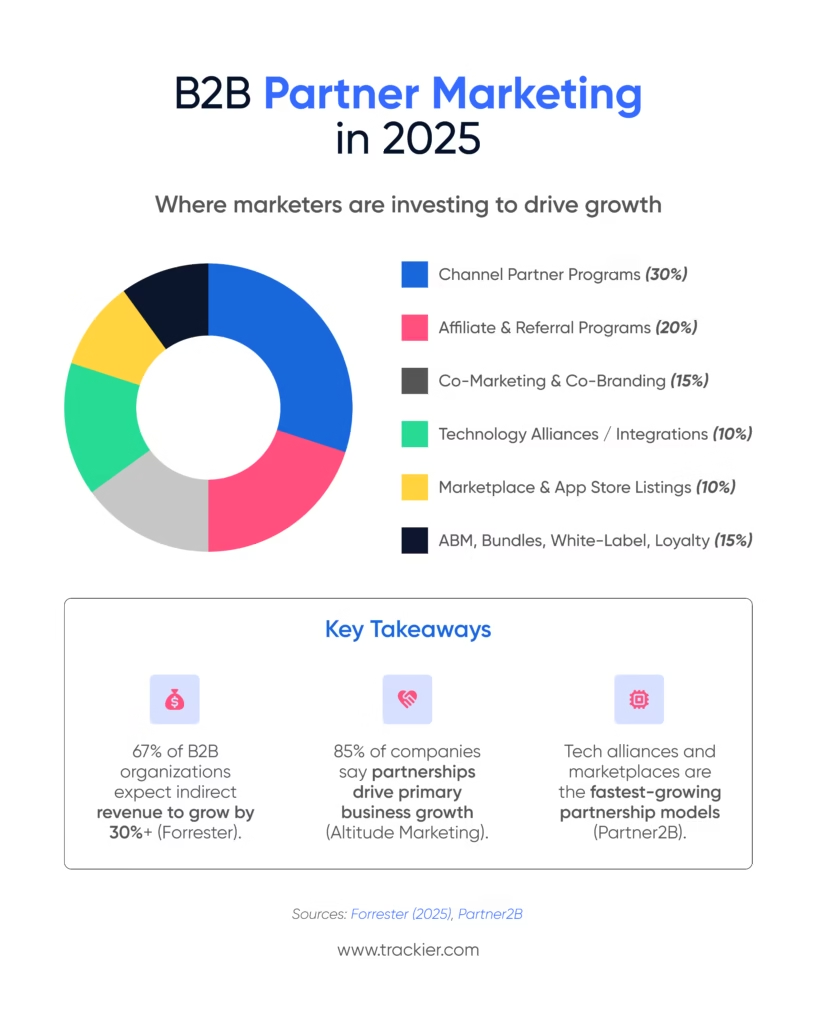
Key B2B Partner Marketing Strategy Driving Revenue Today
Partnerships are now a cornerstone of B2B growth strategies. The companies getting it right in 2025 are using a mix of tactics that consistently deliver measurable results. Let us go through these strategies in detail.
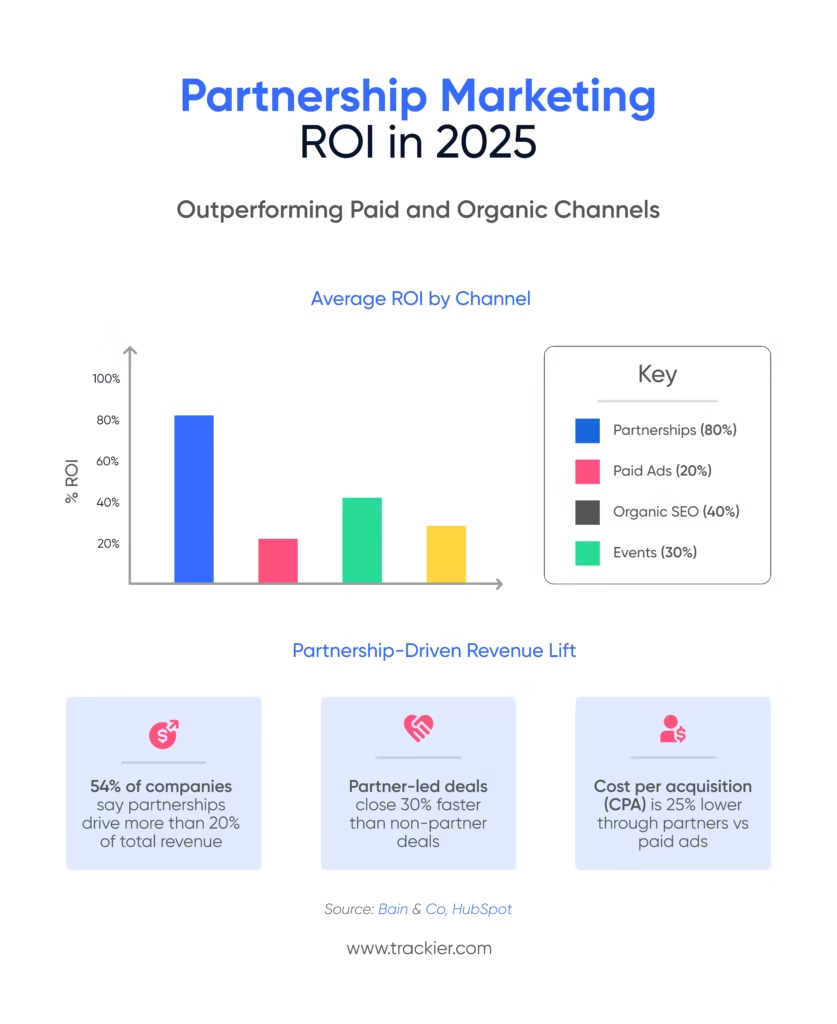
1. Build a Scalable Channel Partner Marketing Strategy
Channel partnerships work best when you focus on quality over quantity. A handful of strong allies can extend your brand further than hundreds of loosely managed partners.
Select partners with strong presence in your target market. Provide co-branded sales materials, clear margin structures, and use collaborative CRMs or dashboards for lead sharing. This focused approach scales better and produces consistent results.
2. Run Co-Branding and Co-Marketing Campaigns
When customers see your company teaming up with a known partner for webinars, reports, or ads, credibility increases.
High-performing brands in 2025 use multi-channel campaigns:
- Social promotions
- Co-authored thought leadership content
- Jointly funded PPC or LinkedIn ads
According to Acceleration Partners, co-invested campaigns often see a 35% boost in conversions compared to solo efforts.
3. Launch Referral and Affiliate Partner Programs
Referrals work because people trust recommendations more than ads. A structured program with tiered commissions, real-time dashboards, and fraud prevention keeps affiliates engaged and delivering high-quality leads.
Check out Trackier’s Affiliate Payments Guide for insights on managing payouts and scaling programs effectively.
4. Forge Strategic Technology Partnerships
In SaaS, integrations and tech alliances create powerful joint solutions. When platforms work together seamlessly, users stick around longer and spend more.
These partnerships also open new marketing opportunities, such as joint launches or exclusive integration webinars, driving both adoption and revenue.
5. Co-Develop Products with Strategic Partners
Some of the strongest partnerships involve co-creating a product or service that neither company could build alone. This could be a bundled SaaS solution or a joint hardware-software package.
Co-development not only splits R&D costs but also creates built-in cross-selling opportunities when both partners promote the solution to their customer bases.
6. Syndicate Content Across Partner Networks
Content syndication extends reach without extra ad spend. Partners can republish your blogs, case studies, or reports on their channels while linking back to you.
This drives SEO authority, increases brand visibility, and positions both companies as thought leaders in the same ecosystem.
7. Co-Sponsor Industry Events and Webinars
Event co-sponsorship remains one of the fastest ways to get in front of qualified leads. Jointly hosted webinars, panels, or live summits pool audiences and reduce costs.
In 2025, virtual and hybrid events are increasingly popular. Partners co-sponsoring these gain shared lead lists, making post-event nurturing easier and more efficient.
8. Run Partner-Led Account-Based Marketing (ABM) Campaigns
Partner-driven ABM involves working together to target specific high-value accounts. Your partner provides warm introductions or account insights, while you co-create personalized campaigns.
This strategy works well for enterprise deals, where decision-making is complex and multiple stakeholders need tailored outreach.
9. Build Marketplace and App Store Partnerships
Listing your solution in a partner’s marketplace or app store exposes it to a ready-to-buy audience. Whether it’s Salesforce AppExchange or AWS Marketplace, these listings generate steady inbound leads.
A well-optimized marketplace presence also boosts partner credibility and creates opportunities for joint upsell campaigns.
10. Create Cross-Selling and Bundled Offer Campaigns
Bundling complementary products makes it easier for customers to adopt solutions without negotiating separate deals.
For example, a marketing automation tool might bundle services with a CRM partner. Cross-promotions increase deal size and improve retention because customers get an end-to-end solution.
11. Explore White-Label or Strategic Licensing Deals
Some partnerships thrive by allowing one partner to sell the other’s solution under their own brand.
White-label agreements expand distribution quickly while keeping costs low. They’re common in tech and services where speed-to-market matters more than brand visibility.
12. Offer Partner-Exclusive Promotions or Loyalty Programs
Finally, incentivize partners with exclusive offers, discounts, or loyalty tiers.
A well-structured loyalty program can increase partner engagement and revenue contribution over time. This approach works best when combined with transparent reporting and regular performance reviews.
How to Build a Step by Step Marketing Strategy That Wins
Even the best strategies will fail without a plan.
Here is how successful companies structure their partner marketing strategy from the ground up.
Identify and Qualify Strategic Partners
Not every company with a similar audience is a good partner. Start by mapping your ideal customer profile. Look at where these customers already buy or engage.
From there, evaluate potential partners for reach, cultural alignment, and complementary products. Many companies use a partner scorecard to rank opportunities and make objective decisions before committing resources.
Define Partner Roles and Goals
Clarity is critical. Each partnership needs agreed-upon revenue targets, lead generation commitments, and defined levels of support from both sides.
Partnerships often fail because incentives are misaligned. Taking the time to set and document expectations at the start prevents confusion and keeps both teams focused on the same outcomes.
Execute a Joint Go-to-Market Strategy
Once goals are clear, you need to launch with a unified approach. This could mean co-hosting events, producing co-branded content, or sharing press outreach.
When both brands push the same message together, results improve significantly. It avoids fragmented campaigns where each party is pulling in different directions.
Track, Optimize, and Scale Partnerships
Optimization is where many partnerships fall short. Without proper tracking, you cannot see what is driving revenue.
ROI and CAC benchmarks for B2B marketing are evolving fast. Reviewing these regularly helps both partners stay competitive and focused on profitable outcomes.
Set up real-time attribution tools to monitor conversions and ROI. Review performance regularly with your partners. Scale the partnerships that deliver results and adjust or phase out those that do not.
Trackier’s platform makes this process straightforward with dashboards that both you and your partners can use to stay aligned.
What Makes a Strong Strategic Partner in B2B Marketing
The right partner is not just another logo on your website. A strong partner targets the same audience without being a competitor, has complementary skills or technology, and shares your growth goals.
Equally important, they invest time and budget into making the partnership successful. When both sides commit equally, the relationship builds momentum and creates value that compounds over time.
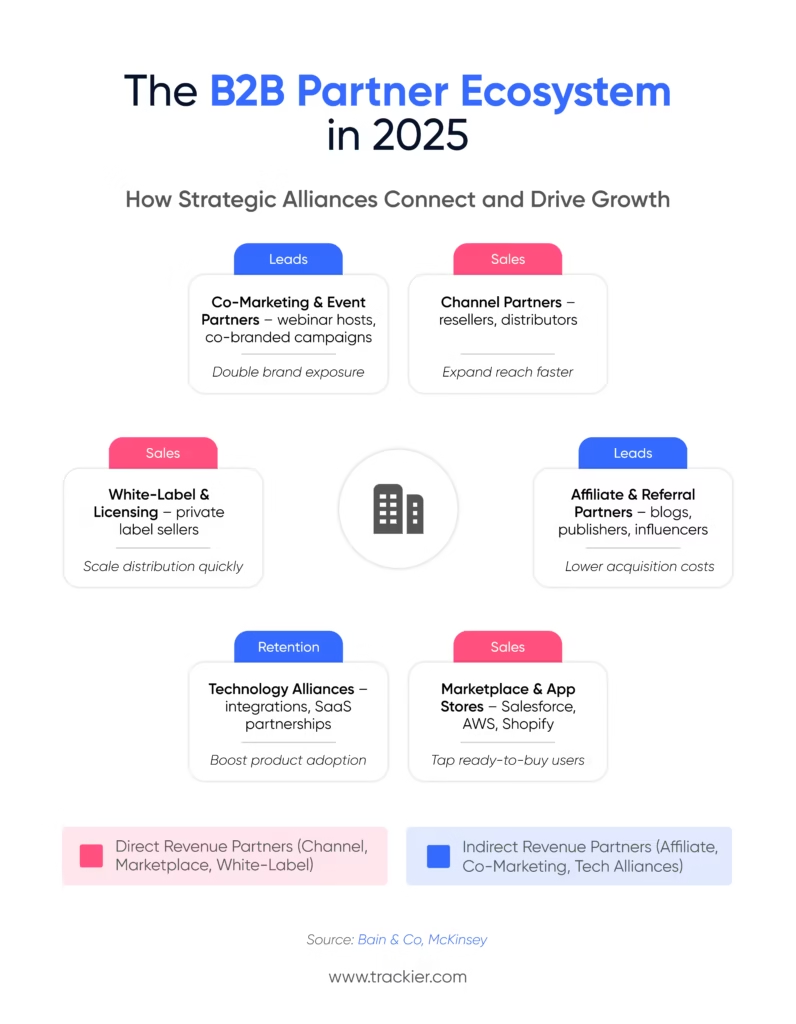
Partner Marketing Best Practices That Strengthen Every Strategy
Even with good strategies, the way you manage partnerships makes a big difference. Experts highlight that ecosystem-led collaboration and partner enablement are shaping how B2B marketers build sustainable partner programs.
Here are some partner marketing best practices that top-performing brands follow:
- Keep communication open with regular check-ins and reviews.
- Train and enable partners so they can confidently sell or promote your solution.
- Share performance data transparently to build trust and guide decisions.
- Reward long-term success rather than one-off wins to encourage consistent results.
These practices keep your partner ecosystem healthy and improve revenue stability over time.
Next Steps – Your Partner Marketing Action Plan
Turning these strategies into results takes a clear action plan:
- Review your current partnerships and identify high performers and underperformers.
- Use a partner scorecard to prioritize where to focus next.
- Set up dashboards to track KPIs you share with your partners.
- Commit to launching one major joint campaign per quarter with a top partner.
- Explore mobile-first tracking tools and real-time attribution dashboards to capture audiences that traditional campaigns often miss.
Conclusion
A successful B2B partner marketing strategy is not built overnight. It is the result of choosing the right partners, setting aligned goals, collaborating on campaigns, and improving performance continuously.
Partner ecosystems are becoming central to B2B organizations’ long-term growth strategies in 2025.
The strategies you have read here including channel programs, co-marketing campaigns, referral networks, and tech alliances, are proven ways to drive revenue in 2025. Backed by best practices like transparent data sharing and long-term incentives, they form a strong foundation for sustainable B2B growth.
With Trackier’s advanced tracking tools and real-time attribution dashboards, marketers can finally see, measure, and scale partnership performance accurately. The next step is yours. Refine your partnerships, align your goals, and launch collaborative campaigns that turn alliances into predictable revenue streams.
Hungry for more?
Sign up for our weekly newsletter to get tips like these delivered, straight to your feed.
Subscribe on LinkedInFAQs
What is a B2B partner marketing strategy?
A B2B partner marketing strategy is a plan where two or more businesses collaborate to promote and sell products or services. Unlike short-term collaborations, it is long-term with shared resources, defined goals, and coordinated campaigns. It can involve co-marketing, referral programs, channel partnerships, or technology integrations.
What are the three strategic partnerships?
In B2B marketing, there are three main types of partnerships. Channel partnerships involve resellers or distributors selling your product to their audience. Affiliate and referral programs pay commissions for driving leads or sales. Technology alliances bring two companies together to build joint solutions or integrations that increase customer value. Together, these cover most partner-driven growth models.
What is strategic partnership marketing?
Strategic partnership marketing is a deeper level of collaboration. It involves comprehensive joint campaigns such as co-branded product launches, multi-channel advertising, or long-term event sponsorships. The goal is to combine audiences and expertise to achieve greater results than either company could achieve independently.
What is a key strategic partner?
A key strategic partner is a business that plays a major role in your growth. They give you access to new markets, distribution channels, or specialized skills that are difficult to build internally. These partners are often central to your overall sales and marketing strategy.
What makes a good strategic partner?
A good partner has aligned goals, serves compatible audiences, and is willing to invest equally in the relationship. They collaborate actively on campaigns, communicate transparently, and focus on building long-term success rather than chasing quick wins. Strong partners also share insights and data, allowing both sides to continuously improve and generate consistent revenue.
